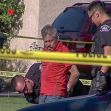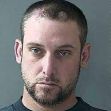Jesse Neaves drove his Lexus at 98.3 miles per hour, twice the speed limit, then rear-ended a car that was stopped at a traffic light. The collision killed two people who were both ejected from their car, and a jury found Neaves guilty of second-degree murder and assault with a deadly weapon. He appealed, arguing that the trial judge’s jury instructions, which did not include “accidental action” as a choice, was prejudicial error. The appellate court disagreed, finding the omission and all of Neaves’s other claims to be harmless errors.
A unanimous 3-0 panel from Division Three of the Fourth District Court of Appeal affirmed the majority of the trial court’s opinion by San Bernardino County Superior Court Judge Ingrid Adamson Uhler on May 1. The unpublished opinion was authored by Justice Thomas A. Delaney with concurrences by Justices Kathleen O’Leary and Martha K. Gooding.
Delaney began the court’s opinion with a lengthy description of events that led to the fatal crash. Neaves was driving “TT,” his then-girlfriend, and her two sons to do some errands on a Saturday night in 2019. TT testified at trial that while she was shopping, Neaves told her elder son S.R. to “take care of his mother” and that his “life ain’t worth living.” Neaves then drank half a bottle of Hennessey. S.R. testified that Neaves “drove erratically” after his mother returned to the car. As they sped away for approximately two minutes, S.R. noticed two vehicles ahead of the Lexus, one of which was a Hyundai that Neaves crashed into, causing the struck vehicle to become airborne.
According to testimony from an officer at the scene, the two occupants of the Hyundai were ejected from their car, causing their deaths when they landed on the asphalt. Photos of the deceased were shown to the jury over defense objection. The photos showed one passenger with broken arms, fractured ribs and tears in the lung, heart and liver. The other passenger “had similar injuries.” The officer described the Hyundai as wrapped around a signal pole “like a taco.” At trial, both the officer and a California Highway Patrol reconstruction expert testified that there was no evidence that Neaves timely applied his brakes or tried to avoid impact before the accident.
The prosecutor had argued that Neaves was guilty of second-degree implied malice murder, due to the driver’s intentional collision. Over objection from the People, Judge Uhler also instructed the jury that involuntary manslaughter could be a “lesser included offense” but did not give an instruction that would support the defense’s theory that the collision was an accident. Neaves was found guilty of second-degree murder and assault with a deadly weapon –the Lexus. He was sentenced to 115 years to life in prison and ordered to pay victim restitution of over $7,000.
After presenting these facts, Justice Delaney defended Judge Uhler’s denial of a defense request for an instruction that would allow the jury to find the collision an accident under California Criminal Jury Instruction (CALCRIM) No. 3404, which says, “The defendant is not guilty of <insert crime without the intent required for that crime, but acted instead accidentally. You may not find the defendant guilty of <insert crime> unless you are convinced beyond a reasonable doubt that (he/she) acted with the required intent.” Delaney wrote that this Instruction was not a permissible affirmative defense.
Rather, he explained, it was “merely a request for instruction that negates the intent element of malice murder.” Neaves maintained that his consumption of a half bottle of Hennessey did not show intent. Instead, Delaney said, at most, it would show criminal negligence. But even then, the opinion said, the trial court’s refusal to give the requested CALCRIM instruction was harmless error. In addition, the Justice cited precedent that ruled it did not meet the required standard for harmless error that holds “it is reasonably probable that a result more favorable to the appealing party would have been reached in the absence of the error.”
The opinion also noted that the requested CALCRIM instruction would have been “duplicative of three other” jury instructions. He explained that even though the word “accident” was not used in the jury instruction, the jury heard the defense’s accident theory “at least six times” from the defense.
Neaves also argued on appeal that there was insufficient evidence to support the jury’s finding of implied malice, which would apply only if Neaves: intentionally committed the act; the consequences of the act were dangerous to human life; the act involved a high degree of probability that it would result in death; and the actor knew his act was dangerous to human life, according to CALCRIM No. 520. Delaney explained that the appellate justices “have reviewed the record and conclude sufficient evidence supports the jury’s finding of implied malice.”
This, he reasoned, was because Neaves was driving at an hour when cars would be on the road, he said that his life was not worth living, he consumed half a bottle of liquor, he drove twice the posted speed limit, he saw that cars ahead of him were stopped at a red light, he was going nearly 100 miles per hour before pressing his brake, and did not swerve to avoid hitting the Hyundai. Delaney said, “From these facts, the jury could reasonably infer Neaves knew his driving endangered his passengers and others on the road, yet he acted with a conscious disregard for human life.”
The next defense argument concerned the admission of “gruesome photos” of the accident victims. This, too, was found to be harmless error, and the photos clarified some of the facts about the accident. Finally, Neaves argued that the judge should not have considered Neaves's previous “two strikes” under California’s Three Strikes law. The opinion noted the defendant has the right to file a Romero motion to “‘invite the court to exercise its power’” to strike an allegation or vacate a finding that a defendant has prior felony convictions. “The appellate court was not persuaded that Judge Uhler should have refused to discount a prior strike and said that her refusal was not an abuse of discretion.”
There was one minor correction, concerning the improper amount of “credit” that Neaves received. Delaney ordered the correction but affirmed the rest of the trial court’s rulings.






